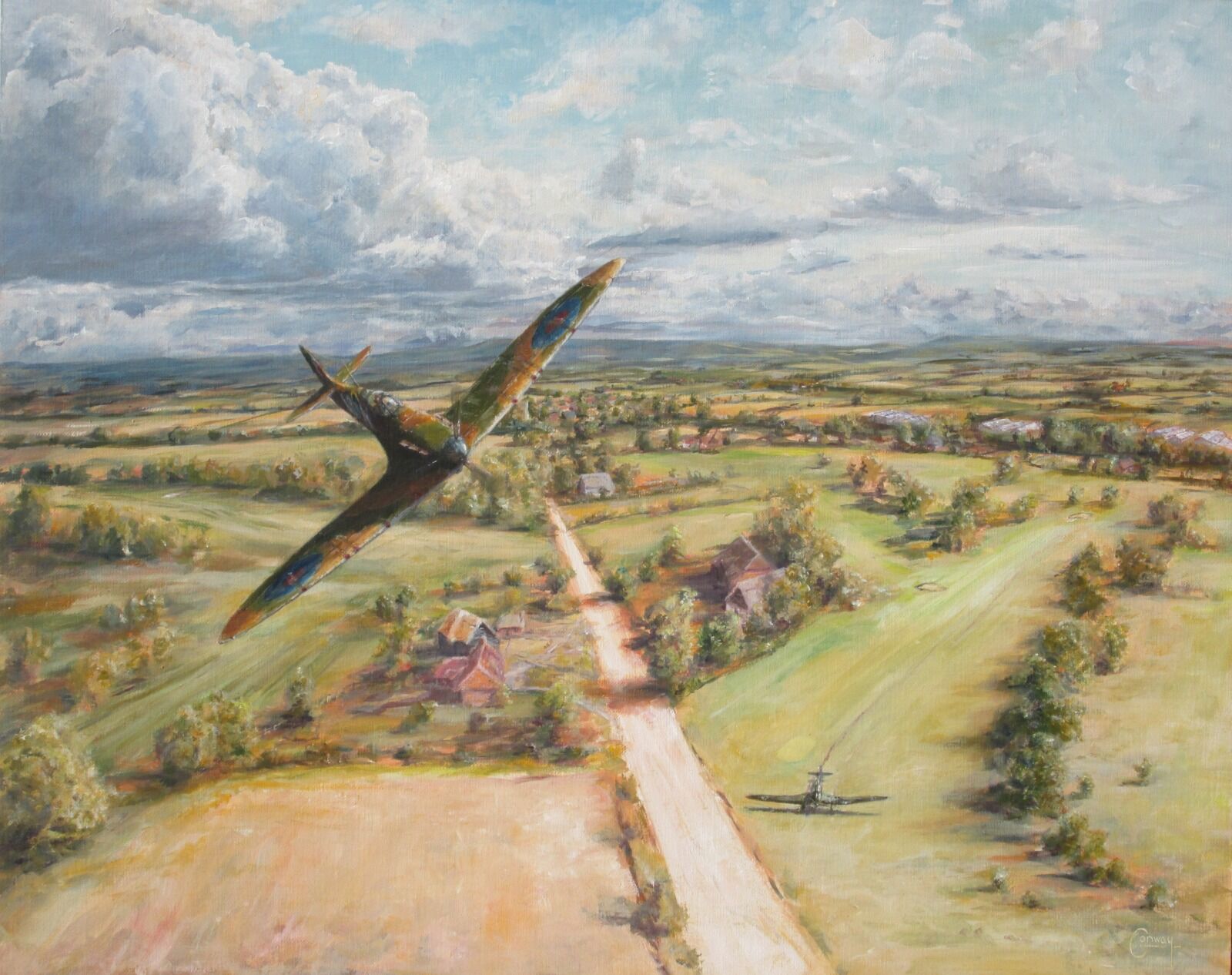
The painting depicts Whall’s aircraft in combat at around 2.35pm on the 18th August 1940. Whall is turning back to the fight, after seeing the Stuka of 2 Gruppe Skukageschwader 7, 5th Staffel, that he has just attacked, force land on Ham Manor Golf Course, near Angmering, W. Sussex.
602 Squadron had been 5 days on ‘readiness’ at Westhampnett, West Sussex, for around 16 hours per day, with significant combat activity, when, at lunchtime on 18th August 1940, they were finally stood down for well-earned rest. The pressure of the raids that day, though, meant they were called back to duty and they had to sprint back across the airfield in response to a Squadron scramble.
Ten minutes later they engaged a formation of 60 Stukas. Whall attacked the Stuka shown in the painting and after watching it force land, he the rejoined the combat and brought down another Stuka. Then, finding his aircraft damaged by return fire, he was forced to ditch his own aircraft on the edge of the sea, a remarkable feat of airmanship. All of this within the space of less than 30 minutes.
Whall had joined the RAFVR (Royal Air Force Volunteer Reserve) two years before the war and was called up at its commencement. Earlier in the year, he had twice been posted to Norway and involved in heavy combat there with 263 Squadron. He was deservedly awarded the DFM (Distinguished Flying Medal) for his actions there. During the Battle of Britain, he flew with 602 Squadron and appears to have been an eminently brave and successful pilot.
He was to die just less than 2 weeks after the encounter depicted, on the 26th August 1940, when after combat with a Ju. 88 over Beachy Head, his Spitfire spun out of control during an attempted forced landing.
He was 22 years of age.
Oil on Canvas Board, Size c. 20"x16". Price £800 (+p&p large)
The story of the this painting and the events behind it are told in detail in a series of articles called Painting the Spitfire
